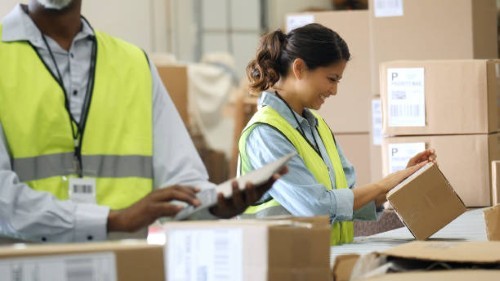Your Business Needs to Go Paperless: Here’s Why and How

Technology advancements have altered our life. All of these innovations have resulted in a plethora of advantages. One of the advantages was that it enabled businesses to go paperless.
Paper is an essential part of any business. It’s used for documents, packagings, and even labels.
Contracts, business ideas, receipts, labels, notes, and so on are all included.
Your business is swimming in more paper than you realize.
And before you realize it, these things are piling up. They’re starting to take up space and it’s getting harder and harder to find what you’re looking for.
And there are a lot of reasons why companies should go paperless.
Going paperless obviously means saving on paper. But it’s actually more than that.
Paperless is Green
According to the Worldwatch Institute, it emits an equivalent to 1.5 tonnes of carbon dioxide to produce just one tonne of Paperless.
And according to research conducted by Kyocera, the average UK employee uses 45 pieces of paper every single day. That amounts to 900 pieces each month per employee. The same employees admitted to actually only using around two-thirds of this amount of paper.
So, that’s about 300 pieces of paper going to waste each month per employee.
And when we throw away paper, we’re not just throwing away the paper; we’re also throwing away all of the resources that went into generating each piece, as well as the carbon footprint that was created throughout the manufacturing process.
Consider how much paper and, more significantly, how much paper waste is produced for something that is destined to be discarded.
Imagine a world where no one uses paper. Consider how many trees could be spared if this occurs.
It may appear impossible, but we must begin somewhere. You may be a part of the solution at any time.
Paperless is Efficient
LM Corporation estimated that searching through piles of paper files can take up about 30 percent of employee time.
One example of how this takes time is when your employees have to look for, say, a document or a contract manually amongst all other paperwork they have on their desks. With digital documents, instead of looking for a document manually, they can just simply search for the keywords on their computers and, voila, there’s the document.
30 percent doesn’t seem like a lot of time wasted…
Actually, it does seem a lot.
In retail, for example, this 30%(or more) of time is spent in changing price labels on shelves when it can actually be used assisting customers, undergoing more training(if needed), and other more important tasks.
Imagine this 30% of time piling up. This amount of time can be used not just for your employees to do more important tasks in your company but, more valuably, be used to conduct recreational activities—such as yoga classes, team buildings, or even just group eat-outs— that could improve employee morale and well-being
Going Paperless Can Save You Money
Going paperless saves you more than just paper. It also helps you save money on paper, ink, storage space, and other printing requirements.
According to MultiBriefs, the average U.S. office spends around $80 worth of paper every year on each employee. Even if you only have 10 employees, that would still amount to $800 per year which doesn’t sound very practical.
Aside from spending on printing needs, when you rely on physical copies of documents, you’d need to invest in file cabinets and locks—and duplicates.
This can mean a significant amount of money especially when you compare it to, say, investing in a cloud storage system
…and storage space
Yes, one sheet of paper doesn’t take up too much space. However, when it’s tens of thousands of sheets of papers, well, that’s a whole different situation.
Now, these papers have to stored somewhere, right?
Before you realize it, you have an entire room dedicated to just papers.
Enjoy The Benefits
Once you’ve successfully made the switch to going paperless, it’s usually much easier to stay paperless.
The impacts you’d feel at the initial stages are the minimized need to print and to fix and change labels.
These and more benefits will only grow to make your office life easier and smoother.
Going paperless doesn’t happen overnight. It’s a process.
If you want to reduce your paper consumption and contribute to the environment, you have to commit to it—start planning and strategizing.
A full transition can take months, years even. Hopefully, the tips on this article make the process easier, help minimize mistakes, and maximize effectiveness.
The role of Electronic Shelf Labels technology in green business
Thankfully, the rise of the digital era has made the shift so much easier, with the help of technology that can be an alternative to (if not totally replace) paper-involving business procedures.
SOLUM is a global leader in providing digital solutions that could, in future, cause paper labels and signages in retail stores to become extinct. Our primary goal is to increase ROI in the long term, optimize in-house systems, and reduce the manual labor involved in replacing every single paper label in stores.
But creating more socially-conscious business decisions? Definitely a major plus.
To learn more about how we can help with your transition to go paperless, contact us today or you can visit our website at www.solumesl.com.





